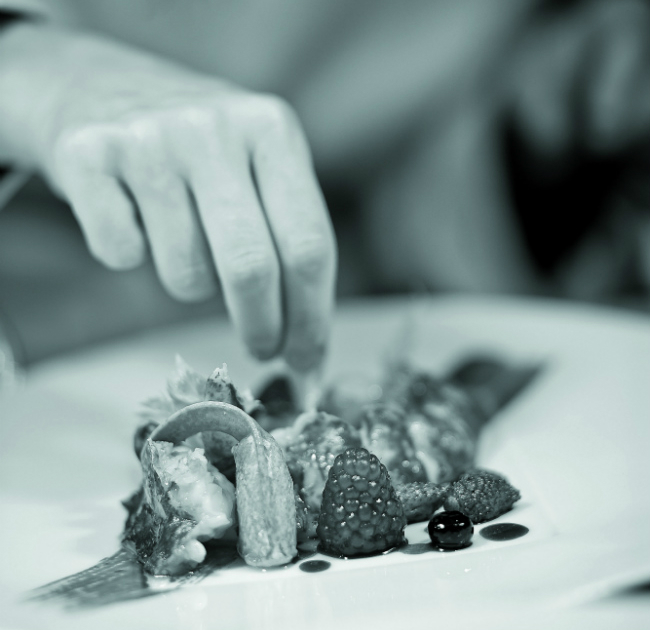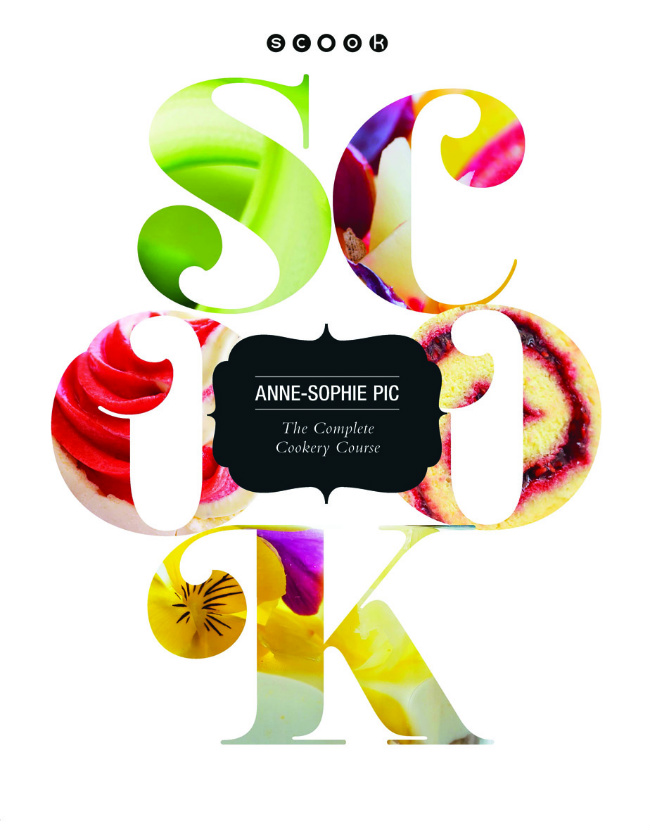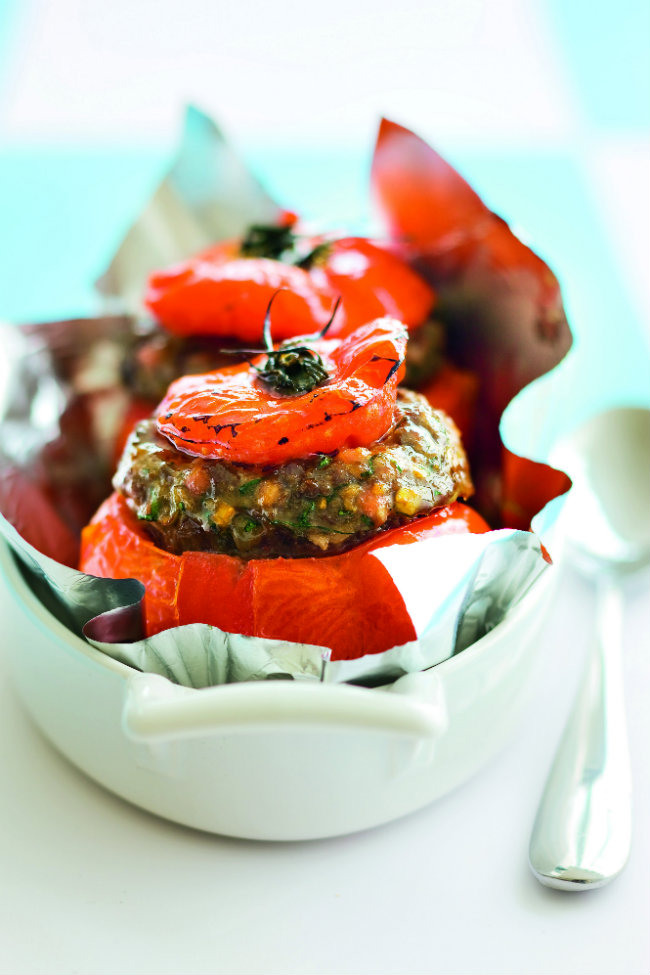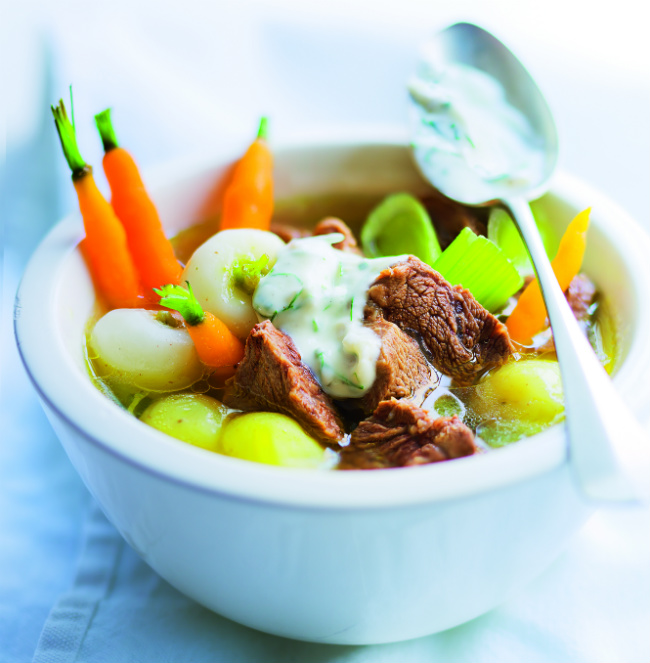Anne-Sophie Pic: Queen of French Cuisine

Anne-Sophie Pic represents the most recent generation of one of France’s most prestigious cooking dynasties. Inheriting the knowledge and experience of four generations of exquisite French cookery, she has continued the tradition of excellence by being named World’s Best Female chef in 2012. She is the only woman in France to hold three Michelin stars for two of her renowned restaurants. She has also started her own cookery school, Scook, with the aim of passing on her knowledge to her many students.
France Today asked Anne-Sophie about her ethos and inspirations, and to share with us some of her favourite recipes.
France Today: What is your earliest food memory, and your favourite dishes from childhood?
Anne-Sophie Pic: I have so many food memories that it is very hard to answer your question. Rather than the product, I remember moments I spent with people I loved that are associated with food. For example, when I was a little girl, I went on Sundays with my grandfather to pick wild mushrooms or strawberries in the countryside. My mother was a very good cook. I liked her beetroot salad and her wonderful roast chicken.
FT: How did your childhood, with your being the daughter and grand-daughter of great chefs, influence your great love of and passion for cooking?
ASP: In my family, we didn’t eat because we had to but for pleasure. My life was given rhythm by the services we provided and we had very little time to be a family because the restaurant was open very often. But there was a moment we all spent together every day: at dinner.
FT: Anything you learned then that you still consider useful today?
ASP: The values taught by my father: never forget where you come from, stay humble and sincere, whatever you achieve.
FT: Is it really true that you had no formal training in cooking? If so, how did you learn?
ASP: Yes it is! I studied for five years at a business school in Paris. Then, when I was 23, I decided to learn cooking with my father. Unfortunately, he died suddenly just two months after I came back home. So, I had to learn by myself. And it took time.
FT: Do you believe that every young chef starting out today needs formal training?
ASP: Yes, it is important to learn the basis of French cuisine.
FT: If you had been born in Brittany or Aveyron, your cooking style and ingredient choices would undoubtedly be different. How has being a child of the Drôme, and Valence in particular, influenced who you are as a chef?
ASP: I live in a small town in a wonderful region with a lot of points of interests regarding culture, landscape and, of course, gastronomy. We have a lot of specialities, such as Caillette de la Drôme, Pogne de Romans, Ravioles du Dauphiné, and also a lot of products such as pigeon, peach and apricot, kid, etc.
FT: Maison Pic first held three Michelin stars in 1939. Which is the greater challenge for a chef: gaining or retaining three Michelin stars?
ASP: My grandfather was honoured with three stars in 1934. He lost two of them in the ‘50s. Then my father won his third star in 1973. After his death, the restaurant lost the third star in 1995. And I got it back in 2007. But you know, beyond these figures, regardless of the stars, the great challenge for a chef is to be at the top every day, and to consider that things are never won.
FT: Three short pieces of advice for young female chefs out there?
ASP: I would tell them to believe in themselves, to follow their dreams and intuitions.

As seen in “Scook: The Complete Cookery Guide” by Anne-Sophie Pic,” photography by Emmanuelle Thion
FT: Your fascination with Japanese culture has led to a passion for tea drinking. Which other aspects of Japanese culture and cuisine can we all learn from?
ASP: Japanese cuisine is just wonderful and a source of inspiration for me. Dashi, kombu, sake paste are some of the ingredients I often use in my cuisine.
FT: What are the most important ingredients that a chef can have?
ASP: Butter, pepper and salt, aromatic herbs.
FT: Favourite meat, fish and vegetable?
ASP: I like all the vegetables, in particular the forgotten or under-appreciated ones such as beetroot, turnip and cabbage. I appreciate cooking game when hunting season is open. And I like red mullet and scallops.
FT: What dish best sums up your culinary ethos?
ASP: The berlingots, filled with soft, lightly smoked Banon watercress consommé infused with ginger and bergamot. These berlingots are very symbolic of my cuisine. I wanted to create a pasta with a unique flavour, colour and shape that would recall the regional Ravioles de Romans, a pasta made using Comté, milk curd and parsley. My inspirations for these were the boiled sweets of the same name that I loved as a child, and the idea of a pasta flavoured with matcha green tea. The innovation of this dish lies in the shape of the berlingot, which guarantees a good balance between the quantities of pasta and filling, and yields a soft, creamy and very gourmet filling.
FT: Imagine that all the wine in the world will suddenly, horrifyingly, disappear tomorrow – but that you can choose one bottle to savour. Which would it be?
ASP: A bottle of Condrieu from my friend Christine Vernay, who is a very smart female wine grower.
FT: And finally, you are granted three wishes to change gastronomic life – the nation’s food habits – in France. What would they be?
ASP: You know, I think that you don’t need any magic wand to change the world. It’s with small daily movements that everyone can have a better life. I think we do have the responsibility as chefs to encourage people to consume fresh, local and seasonal products. Education starts at school and I wish there could be some tastings made for children to teach them how to feed themselves.
From France Today magazine. The below recipes are excerpts from “Scook: The Complete Cookery Guide by Anne-Sophie Pic,” published by Jacqui Small, with photography by Emmanuelle Thion.

“Scook: The Complete Cookery Guide” by Anne-Sophie Pic
RECIPES
Grandma Suzanne’s Stuffed Tomatoes
For 4 | Preparation time: 40 min | Cooking time: 30 min
This is my mother’s recipe, and I have always loved it. The secret lies in using good, firm tomatoes and a richly flavoured stuffing made with lamb, mushrooms and herbs, but no bread.
Equipment
mincer (optional)
Ingredients
The stuffing
1 shallot
4 large white button mushrooms
knob of butter
250g/8 1/2 oz lamb shoulder or minced (ground) lamb
100g/3 1/2 oz ham, diced
1 garlic clove, chopped
1 tablespoon finely chopped parsley
20g/ 3/4 oz grated Parmesan
1 egg
pinch of fine salt
freshly ground pepper
The tomatoes
4 large firm tomatoes
pinch of fine salt
splash of olive oil

Stuffed Tomatoes. As seen in “Scook: The Complete Cookery Guide” by Anne-Sophie Pic,” photography by Emmanuelle Thion
The stuffing: Preheat the oven to 180°c (350°F, Gas Mark 4). peel and finely slice the shallot. Trim the mushrooms, if necessary, then cut into very small dice. Melt the butter in a large pan over a gentle heat, add the shallot and mushrooms and sweat slowly for 2-3 minutes without letting them colour, stirring often. Take off the heat and leave to cool. Mince the lamb, if necessary – in a mincer or with a knife – then add to the pan, along with the ham, garlic, parsley, parmesan and egg. Mix well and season.
Cooking the stuffed tomatoes: Using a serrated knife (this will make it easier), cut off the top of the tomatoes, then scoop out the seeds with a spoon. Lightly salt the inside of the tomatoes, then place them upside down on a wire rack and leave to sweat for 15 minutes. Use a tablespoon to fill the tomatoes generously with the stuffing, replace their tops, then place on an oiled baking sheet and bake for 30 minutes. Serve hot, perhaps with plain white rice.
Tip: It is important to allow time for the tomatoes to sweat – this draws out some of their liquid, so they don’t go too soft in the oven and collapse.

Pot-au-Feu, as seen in “Scook: The Complete Cookery Guide” by Anne-Sophie Pic,” photography by Emmanuelle Thion
Pot-au-Feu with Sharp Horseradish Cream
For 4 | Resting time: overnight + 10 min | Preparation time: 40 min | Cooking time: 50 min
Traditionally, pot-au-feu is cooked for a long time to soften and tenderize the cheaper cuts of meat used in it. But if you make it in a pressure cooker, the tenderizing process is accelerated, saving you time. I like to cook the meat and vegetables separately, adding marrow bones for flavour (though you can leave them out if you want a lighter result), before serving the dish with a sharp horseradish sauce. Pot-au-feu is a dish that deserves to be made all the time, not just for a family Sunday lunch.
Ingredients
The beef
distilled white vinegar
4 marrow bones
200g/7oz blade steak
200g/7oz chuck steak
100g/ 3 1/2 oz boneless rib of beef
2 litres/ 3 1/2 pints vegetable stock
2 onions
2 carrots
1 bouquet garni
3 garlic cloves
3 cloves
3 peppercorns
1 1/2 teaspoons coarse salt
The vegetables
4 baby carrots
4 baby leeks
4 baby turnips
2 stalks celery
4 potatoes
The horseradish cream
150g/ 5 1/2 oz fromage blanc (quark)
1/2 teaspoon grated horseradish
1 tablespoon finely chopped chives
1 tablespoon finely chopped parsley
fine salt, freshly ground pepper
Finishing off
fleur de sel
roughly crushed black pepper
The beef: Fill a large bowl with cold water, add a little white vinegar, then immerse the marrow bones in it and leave them to soak overnight in the fridge. The next day, cut all the meat into pieces, put into a pressure cooker and cover with vegetable stock. Bring to a simmer and then skim off any foam from the surface. Add the trimmed and peeled onions and carrots, the bouquet garni, the crushed garlic, cloves, peppercorns and salt. Follow the manufacturer’s instructions for bringing the cooker up to pressure, then cook for 45 minutes on the ‘vegetables’ setting. Leave the pressure cooker to rest for 10 minutes, off the heat, before carefully opening.
The vegetables: Drain the soaked marrow bones and remove the marrow from the bones. Poach the marrow for 3 minutes in some of the beef-cooking liquid (from the pressure cooker), then keep to one side. Peel and trim the vegetables as required, leaving a little of the leaves on the carrots and turnips (as in the photo). Cook the vegetables in boiling salted water until tender, then refresh in cold water and drain.
The horseradish cream: Meanwhile, mix the fromage blanc with the grated horseradish, chives and finely chopped parsley. Season with salt and pepper.
Finishing off and serving: Skim the fat from the beef-cooking liquid, then strain through a fine sieve. Divide the meats and vegetables between 4 bowls or plates or dishes, and add a little marrow and broth to each one. Season with fleur de sel and roughly crushed black pepper. Serve hot with the horseradish cream.

Clafoutis, as seen in “Scook: The Complete Cookery Guide” by Anne-Sophie Pic,” photography by Emmanuelle Thion
Cinnamon and Cherry Clafoutis
For 4 | Preparation time: 15 min | Cooking time: 15 min
These days I often use cassia bark, a form of cinnamon from China that has a stronger flavour than Indian cinnamon. Used judiciously, I find it leaves a lovely long taste in the mouth, and here I combine it with cherries in a gorgeous, yet noticeably different, clafoutis. If you can, use large Burlat cherries for this.
Ingredients
The clafoutis
12 cherries
knob of butter for frying
1 tablespoon icing (confectioners’) sugar
85g/3oz unsalted butter, softened
1 teaspoon caster (superfine) sugar
85g/3oz icing (confectioners’) sugar
4 pinches of ground cinnamon or cassia bark
85g/3oz ground almonds
5g/ 1/4oz cornflour (cornstarch)
1 egg
The cinnamon cream
150ml/ 5 fl oz double (heavy) cream
10g/ 1/2 oz icing (confectioners’) sugar
4 pinches of ground cinnamon or cassia bark
The clafoutis: Wash, de-stalk and stone the cherries. Put a knob of butter in a hot frying pan and sauté the cherries for 1 minute. Sprinkle with icing sugar and cook for a moment longer, then transfer to a sieve to drain. In a large bowl, mix the softened butter with all the other ingredients except the egg to make a smooth batter. Finally, mix in the egg. Butter a shallow baking dish and pour in the batter. Add the cherries and cook the clafoutis in an oven preheated to 175°c (350°F, Gas Mark 4) for 15 minutes, or until golden. Leave to cool at room temperature.
The cinnamon cream: Whip the cream, icing sugar and cinnamon or cassia together until it just starts to thicken. Serve on the side.
Share to: Facebook Twitter LinkedIn Email
Leave a reply
Your email address will not be published. Required fields are marked *




REPLY